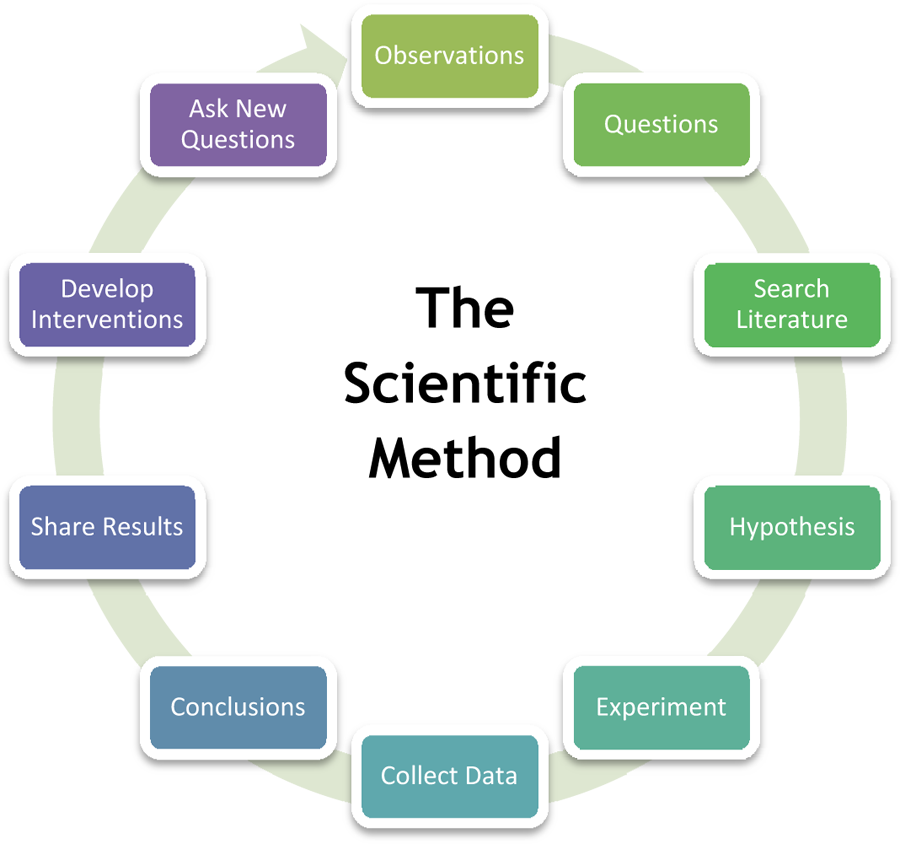Learning Objectives
By the end of this module, you will be able to:
- Explain how the scientific method is used to develop new knowledge
- Describe why it is important to follow a research plan
 Research is a process to discover new knowledge. In the Code of Federal Regulations (45 CFR 46.102(d)) pertaining to the protection of human subjects research is defined as: “A systematic investigation (i.e., the gathering and analysis of information) designed to develop or contribute to generalizable knowledge.” The National Academy of Sciences states that the object of research is to “extend human knowledge of the physical, biological, or social world beyond what is already known.” Research is different than other forms of discovering knowledge (like reading a book) because it uses a systematic process called the Scientific Method.
Research is a process to discover new knowledge. In the Code of Federal Regulations (45 CFR 46.102(d)) pertaining to the protection of human subjects research is defined as: “A systematic investigation (i.e., the gathering and analysis of information) designed to develop or contribute to generalizable knowledge.” The National Academy of Sciences states that the object of research is to “extend human knowledge of the physical, biological, or social world beyond what is already known.” Research is different than other forms of discovering knowledge (like reading a book) because it uses a systematic process called the Scientific Method.
The Scientific Method consists of observing the world around you and creating a hypothesis about relationships in the world. A hypothesis is an informed and educated prediction or explanation about something. Part of the research process involves testing the hypothesis, and then examining the results of these tests as they relate to both the hypothesis and the world around you. When a researcher forms a hypothesis, this acts like a map through the research study. It tells the researcher which factors are important to study and how they might be related to each other or caused by a manipulation that the researcher introduces (e.g. a program, treatment or change in the environment). With this map, the researcher can interpret the information he/she collects and can make sound conclusions about the results.
Research can be done with human beings, animals, plants, other organisms and inorganic matter. When research is done with human beings and animals, it must follow specific rules about the treatment of humans and animals that have been created by the U.S. Federal Government. This ensures that humans and animals are treated with dignity and respect, and that the research causes minimal harm.
No matter what topic is being studied, the value of the research depends on how well it is designed and done. Therefore, one of the most important considerations in doing good research is to follow the design or plan that is developed by an experienced researcher who is called the Principal Investigator (PI). The PI is in charge of all aspects of the research and creates what is called a protocol (the research plan) that all people doing the research must follow. By doing so, the PI and the public can be sure that the results of the research are real and useful to other scientists.
Module 1: Discussion Questions
- How is a hypothesis like a road map?
- Who is ultimately responsible for the design and conduct of a research study?
- How does following the research protocol contribute to informing public health practices?






